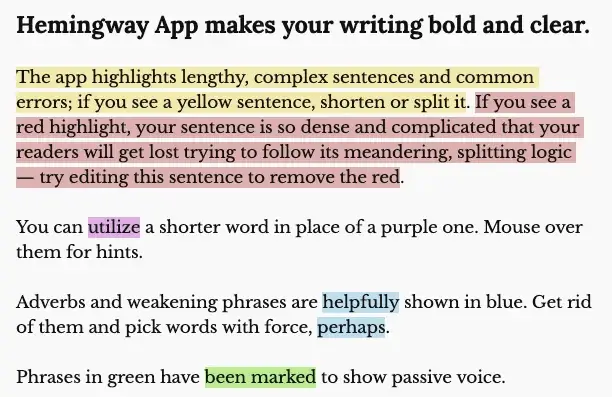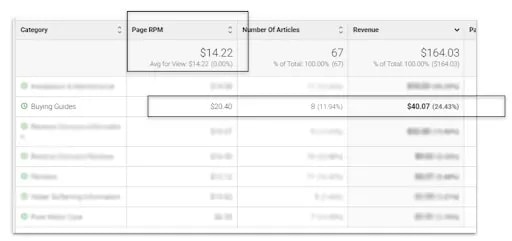This is a guest blog by online entrepreneur, Shabbir Nooruddin.
How to write great content for your site
It is easy to write an article, but writing with purpose and giving your readers what they want takes time and patience.
An authoritative article will require extensive research. Today, I will outline how to go about finding facts for your content. This article will give you the steps you need, from outlining to finishing great content for your site. I’ll also show you how to stay within the limits of what you want to say while keeping your reader in mind.
How long or in-depth should my content be?

There was a time when Google would accept content that barely touched the surface of the topic. Not anymore. Your content has to be authoritative and on the mark. The landscape is too competitive.
All SEO content writers and website content managers are debating the “optimum” length of a post. The conclusion is that you want to focus on quality rather than quantity.
The bare minimum, which might not work anymore, is 300+ words. This number is the lowest possible, albeit it would be considered “thin” content by Google. This length would only suffice for articles that are answering a very simple question that does not merit any further explanation.
A good length would be an average of 2000 words, plus or minus a couple of hundred words. The idea now is not only to depend on the length of your article but to focus on what you are giving your reader. Again, the quality of your article is what will appeal to the reader.
Publishers who use Ezoic can see through Big Data Analytics the length of articles that perform best on their website. Not only are these articles typically top landing pages, but they also generate the most revenue. With this information, publishers don’t have to waste time writing articles that exceed, for example, 5,000 words when their top performing articles always rank in the 2,500 range.

If the reader feels that the information is what they want, they will continue reading and spend more time on the page. The more time the reader spends on your article, the better it ranks with Google.
A good analogy for thinking about how to develop your content is “inch-wide, mile-deep.” Focus on very specific topics and cover all there is to talk about. Today, the individual accessing your site is looking for substantial information, albeit with impatience. Each sentence has to be enticing so that the reader will want to know what the next one is saying.
While writing the piece, look at the topic from several angles. Think like the jeweler examining a diamond by looking and describing all its facets. The reader will get a 360-degree vision of the product or service you are offering.
Adding new perspectives to your articles also helps increase their length and appeal. An easy way to add an alternative viewpoint is to simply add the pros and cons section.
What is the best way to do research for my articles?
Before you begin to research for your articles, keep this thought in mind: Writing involves reading about your topic, thinking about it, adding value to what you have read, and writing your thoughts.
Once you have settled on a topic, it is a wise idea to do some preliminary reading to see what has already been written about it. This study will give you a better understanding of the topic at hand.
The next step is to list the primary sources you will use for the article. A simple and effective way is to create a spreadsheet with the links and resources along with a short comment on each. This step will keep you focused. You can always add and remove the links as your writing progresses. This is critical for YML topics (more on that in the link).
By this time, you will have a fair idea of the topic and what you want to say about it.
At this point in your research, you want to start the writing process. You must create an outline. It does not have to be a masterpiece, or perfect, or anything even close to it.

The outline will serve as a guide or map for you to work with. It will help you stay focused on the topic and prevent you from rambling. The outline will also help you in case you get writer’s block. You will not be staring at a blank screen. You will already have something written. The first word usually breaks the bind and gets you going.
Additionally, an outline helps break down an otherwise lengthy article into multiple smaller articles. By making an outline and focusing on one section at a time, it won’t be quite as overwhelming to write a lengthy post, either.
Once you have the outline ready, go back to your spreadsheet and start reading and studying the resources you have listed. You don’t have to worry about the order at this time. Simply read, take notes, and write. After exhausting each site, you can put a comment on the sheet as a reminder to yourself that you have already referred to this site.
You continue down your list until you have completed the list. If you have come across a few new sites or links, you can always add them to the spreadsheet.
All you do now is read and repeat. Continue to the next link or resource, study it, and write. I am not saying that you should plagiarize, but you must express things in your own words and add value. That is the critical aspect of creative writing. If you decide to quote someone else’s material or write something very similar to it, simply attribute the idea to that person by linking to them from the next. By citing the content, you’re no longer copying it, but referencing it.
Before you know it, you will have fleshed out the outline and will have written a few hundred or even a few thousand words.
Focus on user experience and user intent
Whenever you write something, you want to know who you are addressing. Your focus will be the reader, the user, the target audience. A good practice is to keep an avatar of whom you are writing for in mind.
For example, you are writing for school teachers. When you are at the keyboard, you will keep your favorite teacher in mind and write as though you are speaking with her.
Each word that you write must be there for a purpose.
Make it easy for the reader. The user does not have to think hard to understand what you are saying. It should naturally flow for them.
There are tools like hemmingwayapp.com which lets you check the readability of your writing. As a rule, anything you write should be easily understood by a sixth-grader. Anything above and the general reader will have to exert herself to understand what you are trying to say.

Note: there will be exceptions to this rule – for example, if you’re writing a very technical article, you may have to use the industry terminologies. In this case, you can briefly explain what the technical terms are if you wish to stick to the simplicity rule. If you’re confident your target audience will be able to understand and utilize technical writing, stick to it. At the end of the day, your goal is to provide content that appeals to your reader.
When your reader comes to your site, she should find enough information on it to answer most if not all of her queries, e.g., she is looking for portable generators, she should understand what generators are, how to use them, when to use them, safety issues, where to get them, and other similar questions.
An additional feature Ezoic users can take advantage of when creating content is looking at which category of content produces the highest page RPM’s on their site. Ezoic publishers can see that buying guide articles, for example, generate the most revenue; therefore it would be smart to write more articles on buying guides rather than writing articles on pure water care that do not generate nearly as much revenue.

How do I utilize different types of media?
Nobody likes walls of text! In each article, be sure to utilize lots of white space. In school, we were taught that each paragraph should contain one idea and focus on it.
On the web, there’s no such rule. As a matter of habit, give a paragraph break after every 2-3 sentences. White space will help your reader focus better. You also want to include at least one image per post. If it’s not a very visual post, just use a stock image. But, if you can use images to tell your story alongside your text, definitely go for it! You can also find infographics that other folks have developed and embed them into your post.
When you embed the graphic, be sure to link back to the original creator, and they’ll be more than happy that you used their content.
You can also embed videos (very useful for how-to content,) PDFs, (useful for allowing the reader to download your post,) and even slideshows!
Should I repurpose my content in different mediums?
Finally, all great content creators know the secret of creating regular content is to repurpose old content into new mediums.
Do you have a killer blog post from a few months ago that has been really popular?
- Why not turn it into an infographic?
- How about repurposing the content into a script for a video or a podcast?
- How about breaking up the content into smaller pieces and using it as an email auto-responder?
As you can see, you can upgrade and recycle your hard work.
I’m not advocating to regurgitate the same stuff over and over again, but by occasionally repurposing older content, you are potentially reaching out to folks who would not have found you otherwise.
Your website game may be up to par, but you don’t have a presence on YouTube – why not repurpose your popular website content for YouTube’s audience?
Conclusion
Writing content is not as difficult as it seems. It may take a little bit of practice to get started, but once you get in the flow, you will be writing articles for breakfast, lunch, and dinner.
Of course, you can always outsource your content creation, too. If you decide to go that route, try not to depend on the writer for everything, though you can do this if your writer is an expert on the topic of your content. Otherwise, it’s a good idea to send them a rough outline.


Informative blog
SEO content writing is basically keyword game writing and how effectively you can optimize it into your content. A major aspect is to think like your customers and then create content, a big issue is that most content writers are not educated on SEO concepts and they write content just for the sake of writing quality content and not optimized content.
Great Work! hopefully we can start applying these changes in our next blog. Your content is a great help to our team.